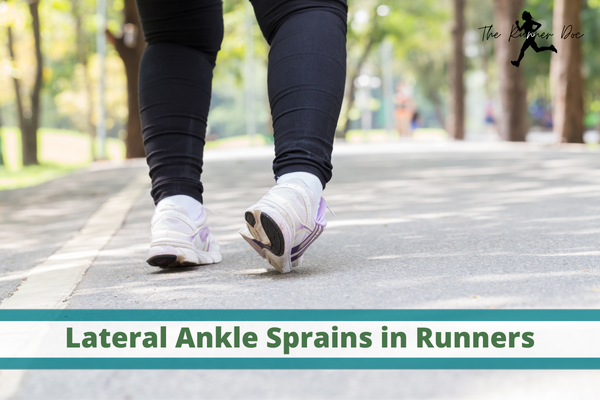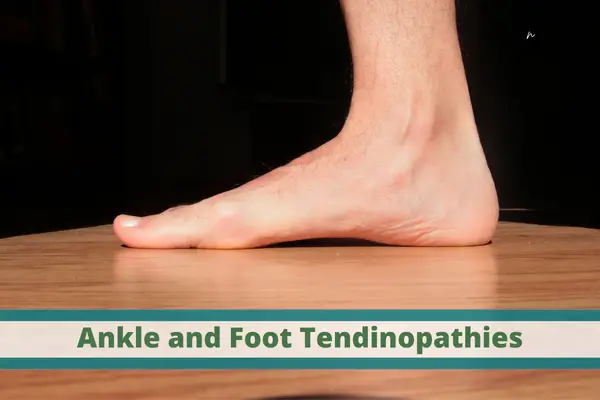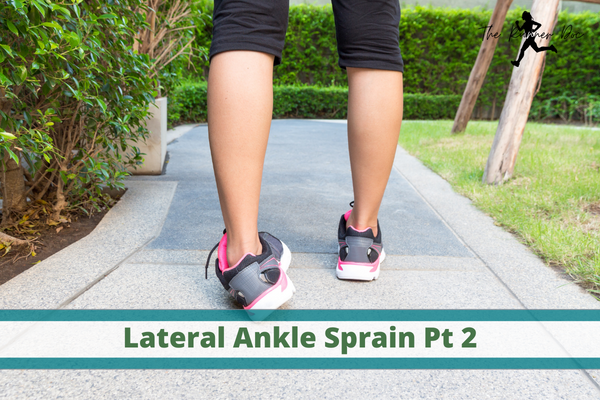Lateral Ankle Sprains in Runners: Initial Treatment
Initial Injury Treatment: Ankle Sprains in Runners
Ankle sprains are an extremely common injury among runners. A sudden change in direction or a misstep can cause the ligaments in your ankle to stretch beyond their capacity, resulting in pain and instability.
While rest, ice, and elevation have long since been recommended as a treatment for an ankle sprain, I’m here to steer you in the right direction.
Read on to figure out how to get back to running faster and without pain following the dreaded ankle sprain!
Get Treated by Dr. Abby for Ankle Sprains
(THIS POST PROBABLY CONTAINS AFFILIATE LINKS. OUR FULL DISCLOSURE POLICY IS REALLY BORING, BUT YOU CAN FIND IT HERE.)
What is an Ankle Sprain
Ankle sprains are the most common type of musculoskeletal injury, primarily affecting people during sporting activities. They occur when ligaments in the ankle area become overstretched or torn, typically due to an excessive force or torque applied to the joint.
The most common type of ankle sprain is caused by what most think of as rolling their ankle.
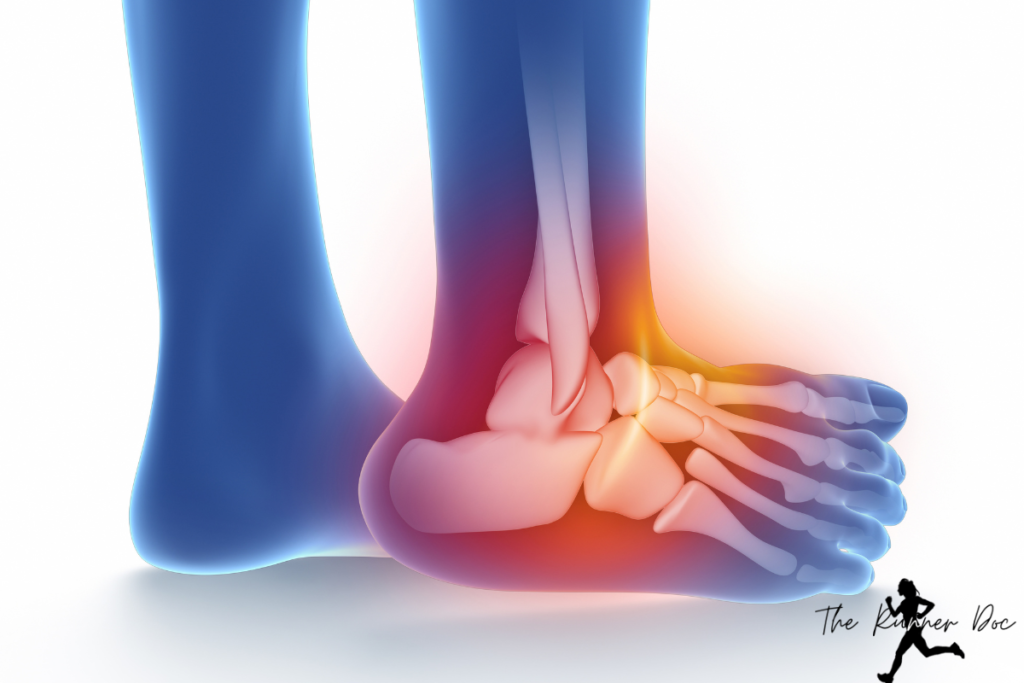
Most commonly, sprains occur when someone runs hard on a surface that is uneven or has small obstacles, versus running on a flat and even field. People who participate in sports involving jumping and landing have an increased risk of experiencing an ankle sprain also.
Related article: The Runner Doc Services
Risk Factors of Ankle Sprains in Runners
There are several risk factors when it comes to ankle sprains in runners. Particularly lateral ankle sprains, which is what we are discussing in this post.
These risk factors include:
- fatigue
- less balance and movement coordination
- decreased ankle dorsiflexion range of motion and strength
- decreased reaction time of the tibialis anterior and gastroc muscles
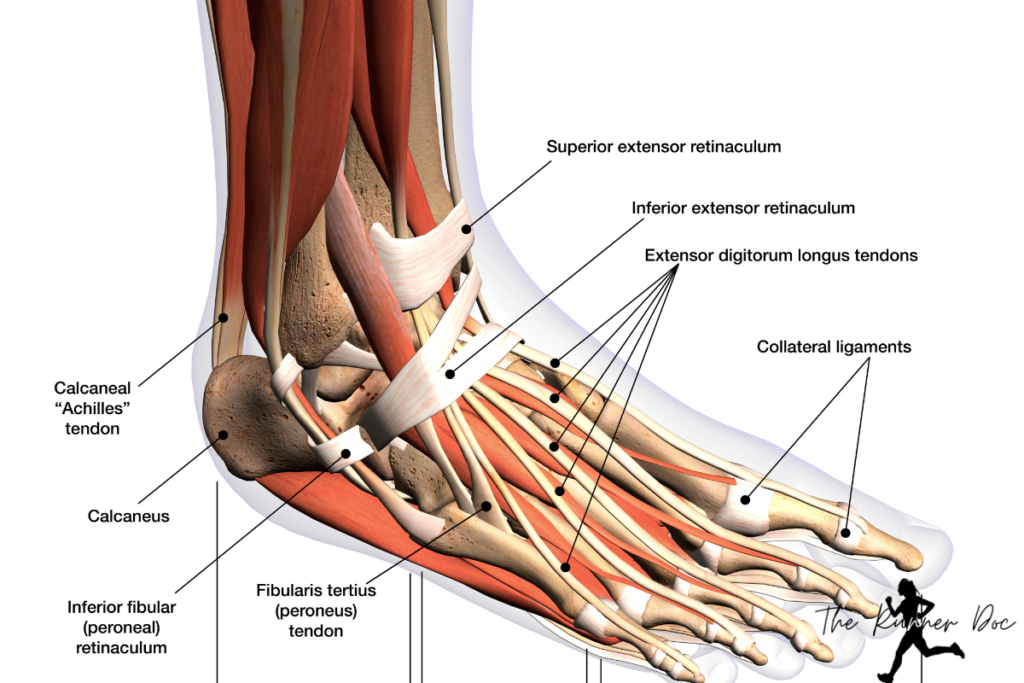
Women have all these risk factors as well as specifically:
- increased calcaneal eversion range of motion
- increased tibial varum (women’s lower leg bones tend to curve outward slightly more than men)
Men specifically have the risk factor of having an increased talar tilt.
Now these were a bunch of science-y terms that probably don’t mean much to most runners. Just know that you need to have strong but flexible feet and ankles and that when you are more fatigued, your are more likely to suffer from a lateral ankle sprain.
However, I would like to note things that the research shows has NO ASSOCIATION to risk of lateral ankle sprains. I think some might come as a surprise to most because of what influencers have lead people to believe.
- Foot posture – meaning low or high arch (as I’ve said before, your arches really don’t matter)
- Joint laxity – if you are loose jointed you aren’t more likely to sprain your ankle
When to Seek Professional Treatment for Ankle Sprains
Remember, this article and blog is here to give advice and an understanding of injuries to help you prevent them. My goal is NOT to keep you out of your Physical Therapist’s office or off of my virtual services schedule.
We are valuable and know when you need further treatment and what you need to focus on. I just don’t think the traditional model of physical therapy is the end all be all way of doing things. But that is a soapbox for another day!
Ottawa Ankle Rules for Runners
There are a set of rules that we look at when it comes to determining if an x-ray is needed. More specifically, to determine if we suspect a fracture.
If you are:
- unable to bear weight
- have bone tenderness on the lateral malleolus (the bump on the outside of your ankle)
- Have bone tenderness at the base of your 5th metatarsal, navicular, or posterior tip of the lateral malleolus
If any or some of these are true then you probably need to make an appointment to get your ankle checked out further. Any of these things being true would mean there is probably a fracture or very severe ankle injury.
Rice for the Ankle Sprain in a Runner
Rice = Rest Ice Compression Elevation
This treatment plan used to be the only thing recommended for the first week or two of almost any injury.
Throw
It
Out
It really isn’t the case anymore and can cause more harm than good.
Rest isn’t the best. Motion is lotion and the less you move the more things are going to hurt for longer.
Ice. Ice is used to decrease and or stop inflammation. But here is the thing. Inflammation is GOOD after an injury usually. It brings blog and nutrients to the injury to help you heal. If you stop the inflammatory process then the injury is going to take longer to heal because the process has been delayed. Inflammation is necessary.
Compression and Elevation are used to decrease swelling. Fine you can keep those two. They won’t help much but they might make it feel a little better if you do them sparingly after working on exercising your ankle.
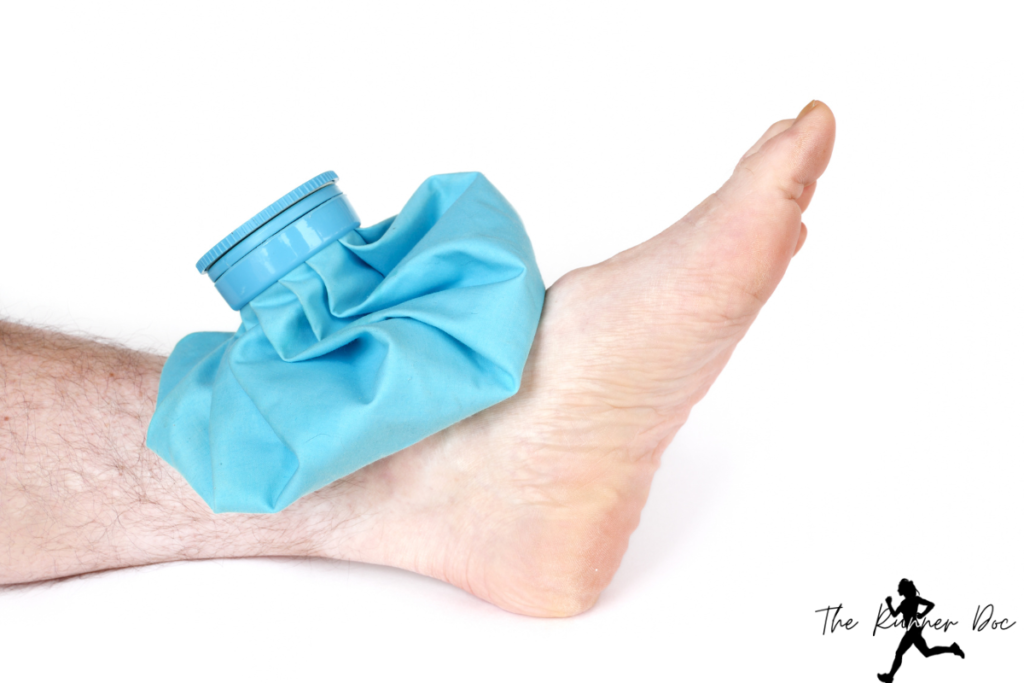
How to Initially Treat a Lateral Ankle Sprain in Runners
Rolling your ankle sucks. Trust me. I just did it a year ago and it was a grade 2 sprain. There are 3 grades. If you have a grade 3 sprain it means you are not putting weight and using crutches for a couple of weeks.
For Grade 1 and 2 ankle sprains however, early mobilization (movement) is key!
I’ll go back and say it again. Motion is Lotion!
Initial Exercises for Grade 1 and 2 Ankle Sprains
Mobilization and movement are what you should focus on in the initial week or two of after an ankle sprain. As soon as it happens, if you can put some weight through it, you should be moving it. If you don’t it will only get stiff and hurt even more to move it. So while these exercises might not be comfortable they will help.
- Ankle CARs
- Toe Scrunches
- Dorsiflexion Mobility
- Kneeling Plantar Flexion Stretch
Check out this instagram post for how to do each! If you are feeling up to it there is a bonus exercise called ankle dance! Add this one in towards the 2nd week after the sprain!
Finally, start working on standing on one leg for balance and proprioception training early on.
Final Thoughts on Lateral Ankle Sprains for Runners
Lateral ankle sprains are a common injury in runners, and the Ottawa Ankle Rules can help you determine if an x-ray is necessary. The traditional RICE method of treatment isn’t always effective for these types of injuries, so it’s important to focus on early mobilization exercises such as CARs, toe scrunches, dorsiflexion mobility and kneeling plantar flexion stretches.
It’s also beneficial to add balance and proprioception training into your recovery plan by practicing standing on one leg. With some effort and dedication to understanding how to treat lateral ankle sprains properly, you’ll be back running again in no time!
AFFILIATE DISCLOSURE
As an Amazon Associate, I earn from qualifying purchases. This post may contain affiliate links. If you use these links to buy something we may earn a commission. The Site may contain links to affiliate websites, and we receive an affiliate commission for any purchases made by you on the affiliate website using such links.
All information should be used as a tool for more knowledge on the subject topic, to use as references for later articles where applicable, or just to keep it in mind during future exercise routines or activities.
This article is not meant to give medical advice or to replace professional health care. Should any ailment occur please contact your doctor or physical therapist immediately to keep yourself safe and prevent further damage.
The author is not liable for any personal or commercial damage directly or indirectly related to the content hereof. You are responsible for adhering to local laws and regulations regarding health & safety, including proper use of equipment or safety gear, and compliance with governing healthcare associations, and state, and federal regulations.
References for Lateral Ankle Sprain in Runners Treatment
- Tee, E., Melbourne, J., Sattler, L., & Hing, W. (2022). Evidence for Rehabilitation Interventions After Acute Lateral Ankle Sprains in Athletes: A Scoping Review, Journal of Sport Rehabilitation, 31(4), 457-464. Retrieved Feb 1, 2023, from https://journals.humankinetics.com/view/journals/jsr/31/4/article-p457.xml
- Beynnon, B.D., Renström, P.A., Alosa, D.M., Baumhauer, J.F. and Vacek, P.M. (2001), Ankle ligament injury risk factors: a prospective study of college athletes. J. Orthop. Res., 19: 213-220. https://doi.org/10.1016/S0736-0266(00)90004-4
Lateral Ankle Sprain in Runners: How to Treat and Prevent Them
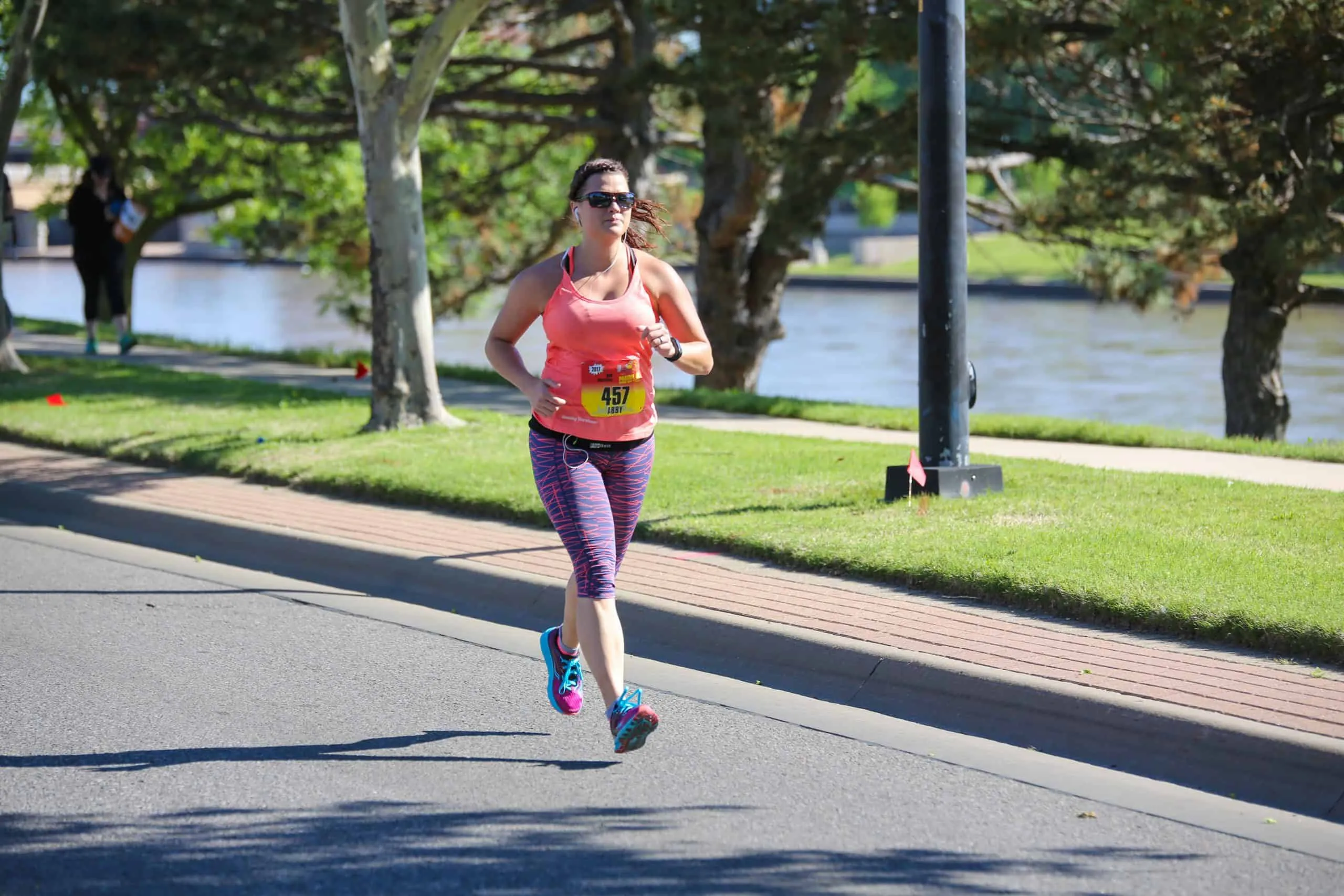
Dr. Abby Siler, PT, DPT is a Physical Therapist with 10 years of experience in a variety of settings. She has spent the majority of her time treating athletes in orthopedic clinics and worker’s compensation cases. She is a runner herself for the past 15 years and a lifelong athlete. Dr. Abby loves to teach runners how to stay injury free and out of her clinic.

